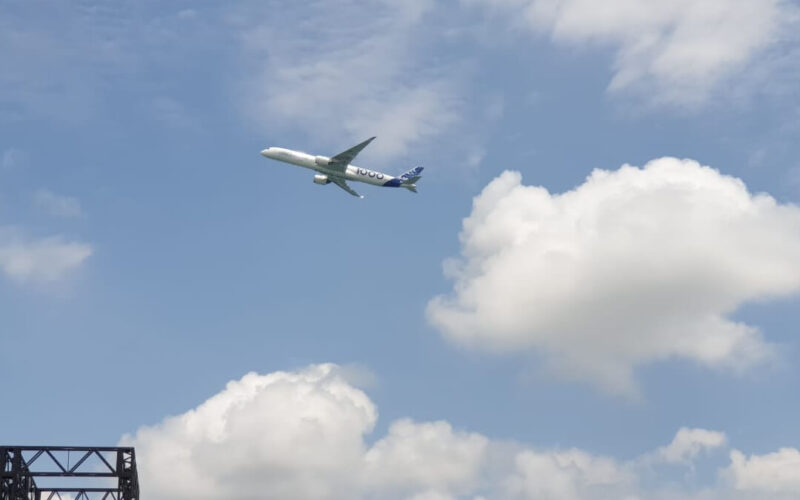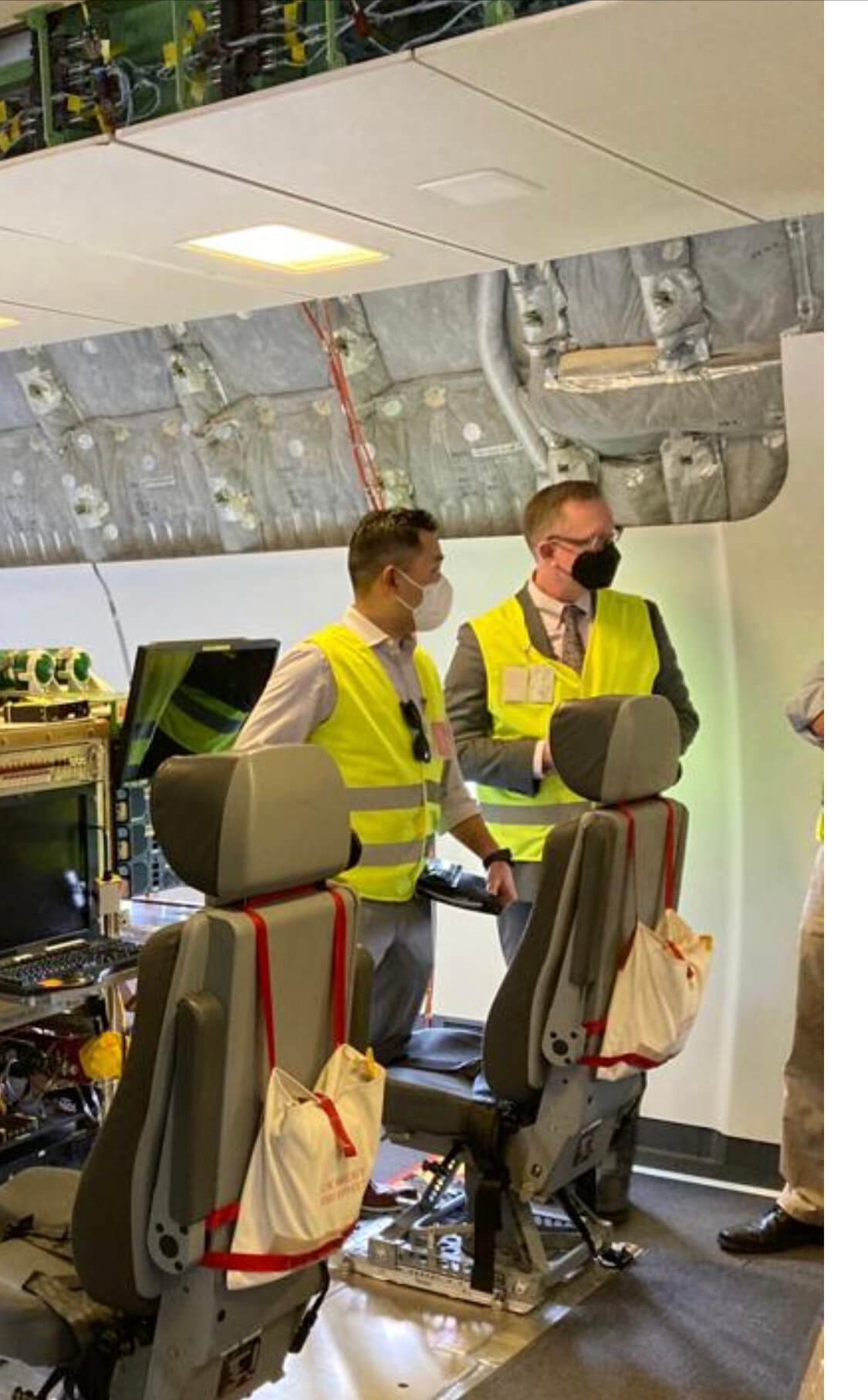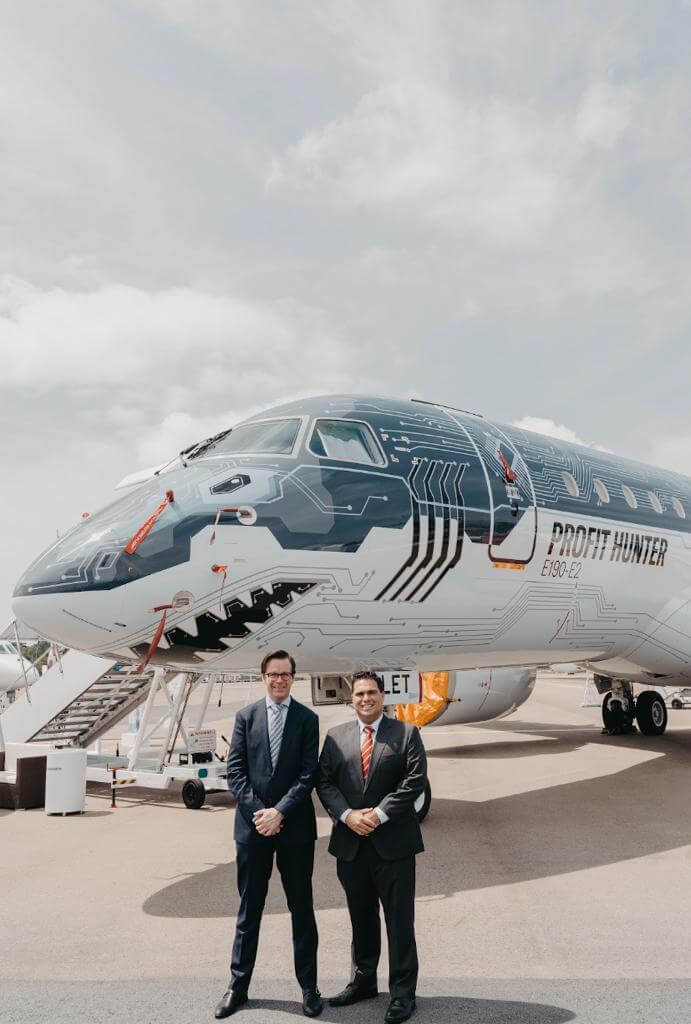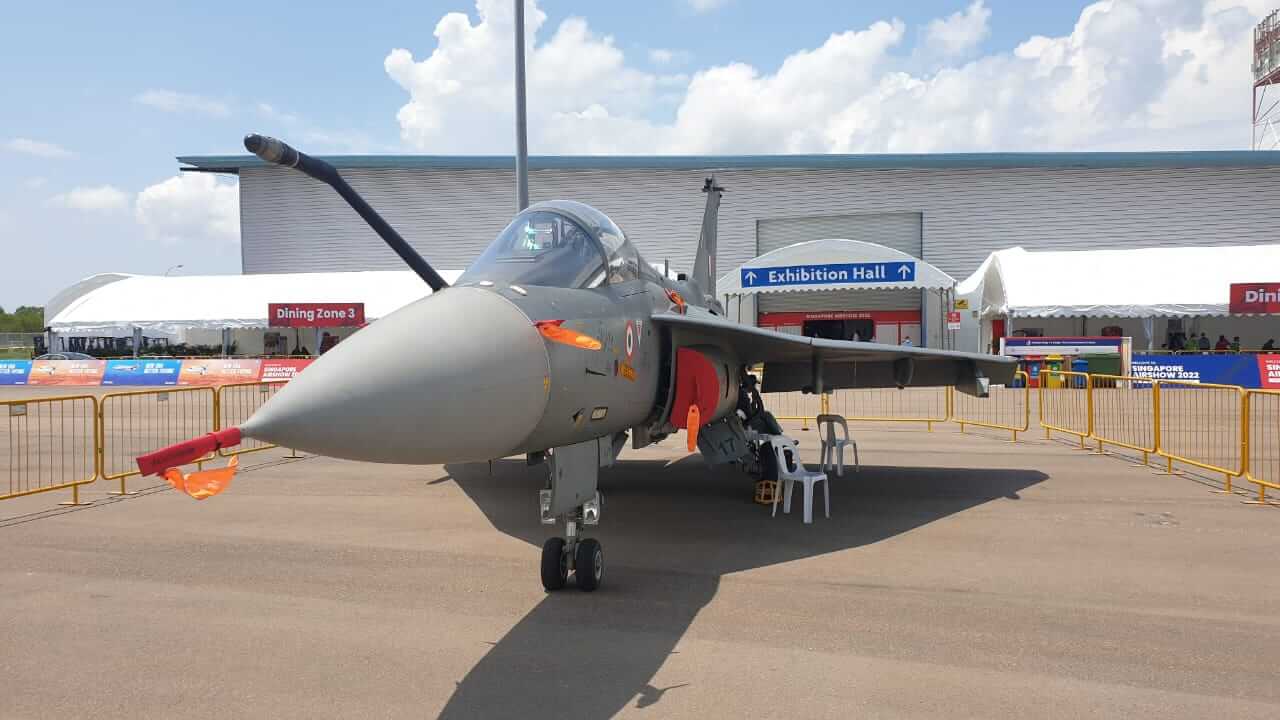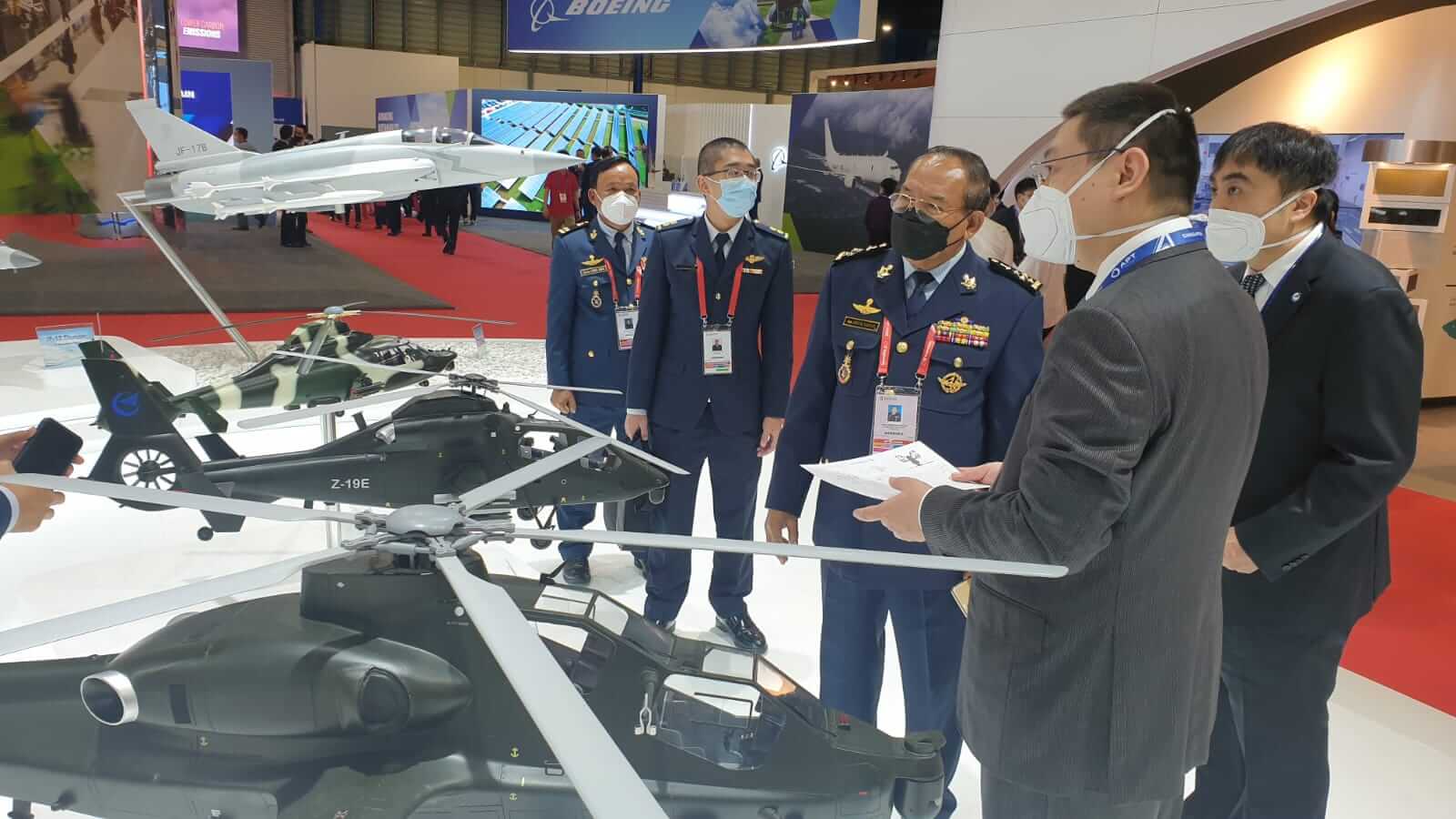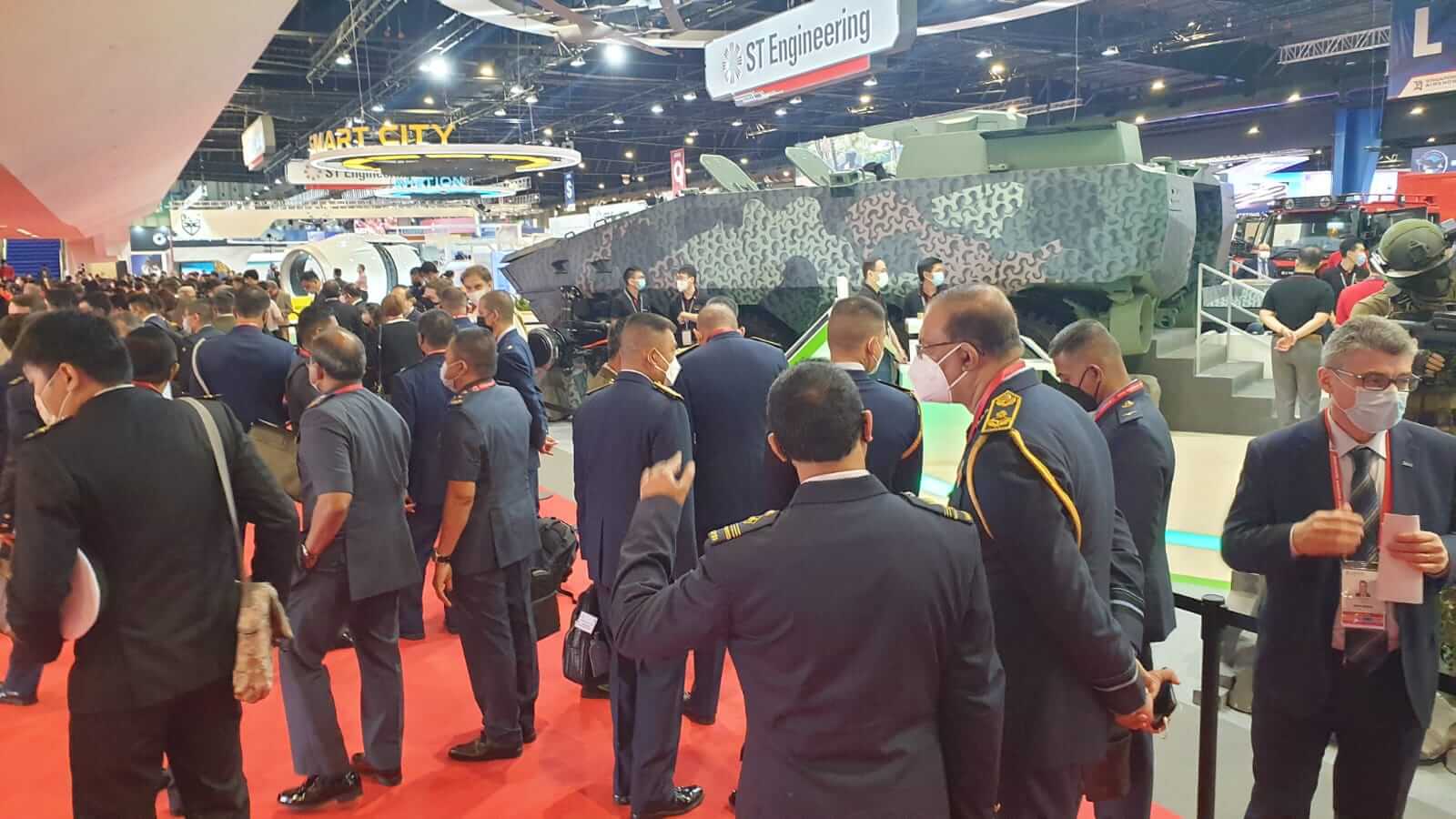By Jay Me in Singapore
The sun peeked happily from behind the silver-grey clouds as the Airbus 350-1000 and Boeing 777-9 took to the skies to outdo each other at the opening day of the Singapore Airshow 2022.
The airshow may be quieter than usual but the manufacturers haven’t let up in their drive to showcase their bigger aircraft and participants seem happy to be talking business and deals in person.
Boeing is making all efforts to drive interest in the new 777-9, which is making its debut in Asia, and Airbus is seeking to bring more attention to the A350-1000, a longer variant of its A350-900.
Standing alongside flight engineers and technicians inside WH001, the first development 777-9, Boeing’s senior director of product marketing Brian Hermesmeyer describes the show as an important opportunity.
“We are happy to be here as Singapore Airlines (SIA1) (SINGY) (SIA) is one of our customers…and the show provides us an opportunity to engage with customers, government officials and partners among others,” he explains.
Boeing’s senior director product marketing Brian Hermesmeyer inside the 777-9 test aircraft in Singapore CREDIT: Jay Me
Although the mood is definitely subdued with fewer exhibitors and attendees than normal, Airbus Chief Commercial Officer Christian Scherer is delighted to be back at a physical show.
“The airshow is on, and we applaud that,” Scherer says. “The signs are quite encouraging…Our business will prosper in the region,” Scherer feels. “I am confident we will see a strong rebound in travel in the Asia-Pacific region, especially for long distance travel.”
Airbus’ latest global market forecast predicts a demand for 17,620 new passenger and freighter aircraft in the APAC region, including around 4,000 aircraft in the medium and large categories.
Hope Amid Challenges
Airlines in the Asia-Pacific have been particularly hard-hit by the pandemic. But Arjan Meijer, President and CEO Embraer Commercial Aviation, says there are opportunities amid the challenges, particularly as the aviation industry tries to cut CO2 emissions.
“Since we last gathered in Singapore in February 2020, our industry has been challenged like never before, and responded with incredible resilience,” Meijer said. “This event comes at a key moment for our industry as we tackle critical challenges – enabling airlines to reposition themselves for better growth and the environment.”
Embraer’s Arjan Meijer and Raul Villaron with the “Tech Shark” CREDIT: Jay Me
The Brazilian airframer unveiled a new “Tech Shark” livery for its E2 jet, dubbed the profit hunter, at the show. The E190-E2, part of Embraer’s E2 family of advanced jets, is eyeing customers in the APAC region.
“We forecast that Asia Pacific, including China, requires more than 3,000 aircraft of under 150 seats in the next 20 years,” says Raul Villaron, Asia Pacific Vice President for Embraer Commercial Aviation. “Crossover jets like the E-Jets E2 and the first-generation E-Jets play an essential role in enabling airlines to open, develop, and grow their networks profitably.”
“We are happy that the show is on and we are able to showcase our TechShark,” he adds.
Arch Rivals Meet
The Tejas in Singapore CREDIT: Jay Me
Turning to defense, the Singapore Airshow gives India a chance against rival China to showcase its multi-role light fighter Tejas, which means ‘Radiance’. The single-engine light combat aircraft (LCA) entered the flying display on its debut appearance in Singapore.
“The participation of the Indian Air Force in this air show provides India with an opportunity to showcase the Tejas aircraft and to interact with counterparts from the Republic of Singapore Air Force and other participating contingents,” an official of the IAF says.
Tejas is bidding to win an order from the Royal Malaysian Air Force (RMAF), which is looking to buy a mix of up to 36 light fighter variants under its “Capability 55” plan.
Interestingly, wherever Tejas has participated in flying displays airshows, such as in Malaysia, Bahrain and Dubai, China seems to have kept its rival JF-17 away. This time as well, the Chinese have decided to display the models of their single and twin-engine JF-17s and J-10C fighters at their pavilion.
An Indian aviation expert, who preferred anonymity, quipped: “The LCA Tejas is doing what the Chinese did over a decade back with the JF-17s. We will have to wait and watch whether India’s indigenous fighter will be able to bag any deals as it is not yet combat proven.”
Many Chinese companies are also staying away from this year’s show, likely because of Beijing’s “zero-Covid” policies that involve lengthy quarantines.
Interest in TF-X Mock-Up
A full-scale mockup of Turkish Aerospace Industries’ (TAI) TF-X fighter with a wide range of dummy weapons has caught the attention of the visitors to the static display zone. It’s the first time that the exact model of the 5th generation Turkish Fighter is on display in the Asia region.
Stressing the importance of participating at the Singapore Airshow, Turkish Aerospace President and CEO Temel Kotil says: “We are excited to be part of the Singapore Airshow. It is important to be part of the Asian market in the defense industry.”
Kotil intends to use the event in Singapore for meetings with military and civilian partners to drive further cooperation.
“We are making strategic decisions on a global scale to increase our business marketing activities both in the academic field and in production. We are working on new business models to develop relationships in the region. I believe it will strengthen us.”
Strategic Competition Fuels Defense Spending
Cambodia’s Air Force General Samnang Soeung inspects a model of China’s Harbin Z-19E new attack helicopter CREDIT: Jay Me
The pandemic may have severely punctured the civil aviation sector, but thanks to the increasing geopolitical tensions, defense spending by the countries seems to have grown in the region, as highlighted by Indonesia’s US$8.1 billion order for 42 Rafale fighters.
According to Boeing’s latest defense update, it has opportunities worth about US$70 billion in defense and services in the APAC region.
Others were also taking the chance to showcase their latest wares at the airshow. Israel’s Elbit Systems unveiled the Skylark 3 Hybrid Small Tactical Unmanned Aerial Systems (STUAS), while Israel Aerospace Industries (IAI) displayed the Blue Spear (5G SSM) surface-to-surface missile for the first time.
“The Blue Spear’s inaugural display in IAI’s booth at this show highlights IAI’s successful heritage developing naval and air defense solutions, and offering highly competitive and advanced holistic systems to the worldwide market,” said Boaz Levy, IAI President and CEO.
COVID Reality
Singapore Airshow delegates CREDIT: Jay Me
So far, the show has been a quiet one in terms of orders, unlike previous airshows across the world when multi-million deals would come thick and fast.
Apart from two technical support contract extensions secured by Airbus with Japan’s Ministry of Defense, there were hardly any deals worth mentioning on the opening day of the show.
There’s no denying that attendance is definitely lower, with COVID-19 restrictions such as daily antigen rapid tests, and no networking during meal times, casting a pall. However, mask wearing doesn’t seem to be stopping the industry players and decision makers hosting business discussions at the pavilions. So orders could yet be forthcoming.
As Leck Chet Lam, the Managing Director of the airshow’s organizer Experia Events, claims: “We have assembled a high quality set of exhibitors, and the congregation of the right people are here — top industry players and decision-makers — so the conversations will be just as good, or even better.”

